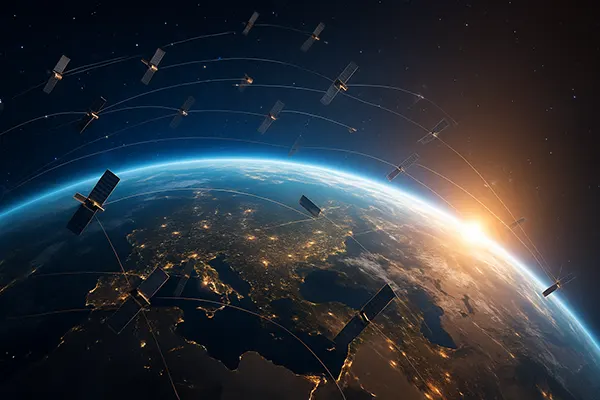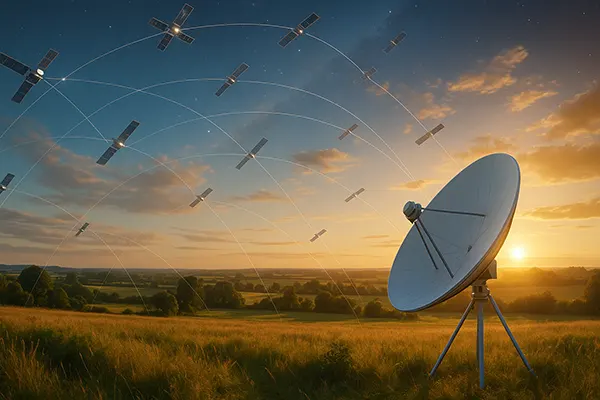
Next-Generation Satellite Internet: How Starlink and Its Rivals Are Reshaping Digital Infrastructure
Over the past few years, satellite internet has experienced a remarkable transformation. No longer reserved for remote expeditions or emergency responders, this technology is now disrupting global telecommunications. At the heart of this evolution is Starlink, the satellite network spearheaded by SpaceX, along with a handful of rising competitors pushing the boundaries of high-speed global connectivity.
Starlink and the Rise of LEO Satellite Networks
Starlink’s constellation of over 6,000 low Earth orbit (LEO) satellites as of June 2025 has set a new benchmark in satellite internet. Unlike traditional geostationary satellites that orbit 35,786 km above Earth, LEO satellites orbit at altitudes between 300 and 1,200 km, dramatically reducing latency and improving speed.
This approach has made it feasible to deliver speeds exceeding 200 Mbps with latencies as low as 20 ms, putting satellite internet on par with many fibre broadband services. This has proven vital for rural and underserved areas where terrestrial infrastructure remains impractical or economically unviable.
Beyond performance, Starlink’s strategy of vertically integrated hardware and regular satellite launches has helped it expand rapidly. In just five years, the service has grown to serve over 3.5 million users worldwide, with active regulatory approvals in more than 50 countries.
How Starlink Has Changed Market Expectations
Before Starlink, satellite internet was often synonymous with high cost and poor performance. Today, user expectations have shifted. Fast setup times (as little as 15 minutes with the Starlink kit), consistent speeds, and relatively affordable pricing have redefined what users believe satellite internet can deliver.
Moreover, businesses are now exploring Starlink for enterprise-grade applications, from offshore operations to mobile broadband on vehicles and aircraft. Its ability to offer stable connections without the need for terrestrial towers gives it a distinct edge in critical communications.
Other players have taken notice. The surge in LEO network development has triggered broader investment and collaboration in the sector, forcing incumbent operators like HughesNet and Viasat to accelerate innovation or risk obsolescence.
New Players and Growing Competition
While Starlink has taken the lead, several rivals are actively building their own LEO constellations. Amazon’s Project Kuiper, now operational with its first 1,200 satellites, aims to challenge Starlink with similar latency and throughput standards. It plans to launch its full service by late 2025.
Meanwhile, OneWeb, backed by Eutelsat and the UK government, has pivoted towards enterprise and governmental markets, offering high-reliability bandwidth for remote offices, research stations, and military applications. Its network of over 600 satellites already provides coverage above 50° latitude.
In China, Guowang (China SatNet) is emerging as a state-backed initiative intended to create a national LEO infrastructure independent of Western technology. Although currently limited to domestic trials, international expansion is a long-term goal.
The Global Impact of LEO Competition
The influx of new providers has catalysed faster innovation cycles, cheaper consumer pricing, and more resilient services. With overlapping coverage zones, customers benefit from increased redundancy, which is critical for disaster recovery and military-grade deployments.
Simultaneously, governments are becoming more involved. The EU, for example, has launched the IRIS² initiative to develop a secure European constellation, aiming to ensure sovereign control over critical space infrastructure.
These developments mark a shift from fragmented national services to a globally integrated satellite broadband ecosystem, where choice and redundancy reduce monopolies and increase accessibility worldwide.

Technical and Regulatory Challenges
Despite the progress, next-gen satellite internet still faces technical hurdles. The dense satellite constellations increase the risk of space debris and require precise orbital management to avoid collisions. Organisations like the UN Office for Outer Space Affairs are now pushing for stricter coordination frameworks.
On the ground, interoperability remains a challenge. Many user terminals are vendor-locked, and regulatory approvals vary by jurisdiction, slowing down service expansion. Harmonising spectrum use, especially in the Ka and Ku bands, remains a contentious issue among national regulators.
Additionally, the high costs of satellite manufacturing and launch still represent a barrier to smaller entrants. Although SpaceX benefits from its own Falcon 9 rockets, others must rely on expensive third-party launch services or wait for cheaper alternatives such as reusable systems from Blue Origin and Rocket Lab.
The Road Ahead: Opportunities and Responsibilities
The evolution of satellite internet brings a rare opportunity to achieve global digital equity. If deployment continues responsibly, it could close connectivity gaps for over 2 billion people currently underserved by terrestrial internet solutions.
However, this must be matched by ethical use and data privacy frameworks. The global reach of LEO networks demands robust international regulation to prevent misuse and ensure user rights, especially in regions with weak civil protections.
In summary, Starlink and its competitors are rewriting the blueprint of global internet infrastructure. Their rise signals not just a new chapter in connectivity—but a potential turning point for how information is shared, accessed, and controlled on a planetary scale.





